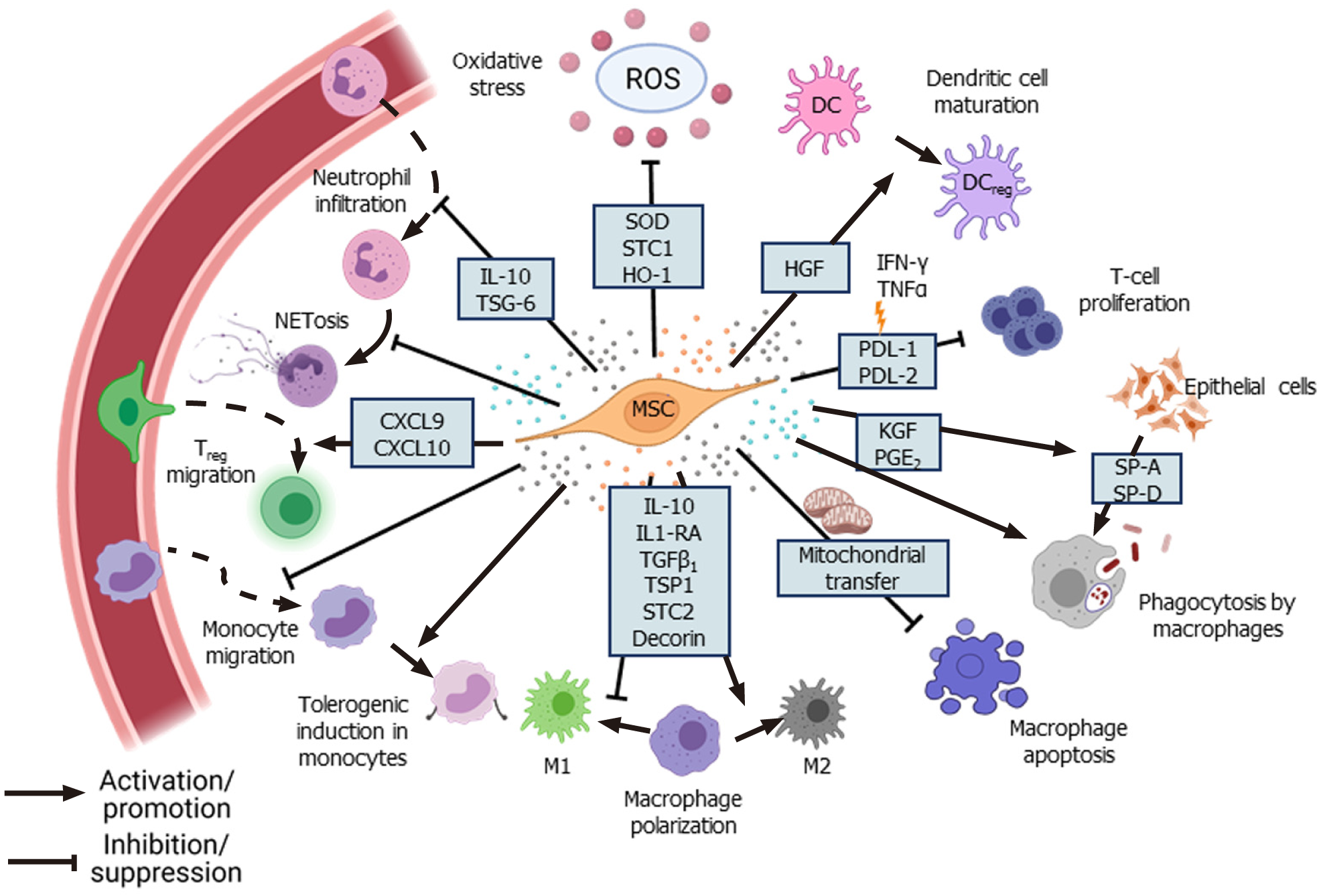Copyright
©The Author(s) 2021.
World J Stem Cells. Jun 26, 2021; 13(6): 568-593
Published online Jun 26, 2021. doi: 10.4252/wjsc.v13.i6.568
Published online Jun 26, 2021. doi: 10.4252/wjsc.v13.i6.568
Figure 3 Tissue repair and regeneration.
Mesenchymal stem cells (MSCs) have multilineage differentiation potential and can differentiate into cells of target tissue during injury. MSCs also reduce collagen deposition and fibrosis at the site of injury by secreting matrix metalloproteinases[114,115]. Mitogens secreted directly or packaged in extracellular vesicles secreted by MSCs, mitochondrial transfer from MSCs to the injured cells promote proliferation and survival of lung epithelial cells[87,88]. MSCs also secrete pro-angiogenic factors such as vascular endothelial growth factor[108] and LL-37 to promote angiogenesis[25]. In the context of lung injury, lipoxinA4, angiopoietin-1, keratinocyte growth factor (KGF), hepatocyte growth factor (HGF), and vascular endothelial growth factor promote alveolar fluid clearance, which improves gas exchange in the lungs[68,70,94,95]. CXCL: C-X-C motif ligand; DC: Dendritic cell; HGF: Human growth factor; HO-1: Heme oxgenase-1; IFNγ: Interferon γ; IL-10: Interleukin 10; IL1RA: Interleukin 1 receptor antagonist; PD-L1: Programmed death-ligand 1; PGE: Prostaglandin E2; ROS: Reactive oxygen species; SOD: Superoxide dismutase; SP: Surfactant protein; STC: Stanniocalcin; TSG-6: Tumor necrosis factor α-stimulated gene-6; TNFα: Tumor necrosis factor α; TGF: Transforming growth factor; Treg: regulatory T cell; TSP: Thrombospondin.
- Citation: Sharma A, Chakraborty A, Jaganathan BG. Review of the potential of mesenchymal stem cells for the treatment of infectious diseases. World J Stem Cells 2021; 13(6): 568-593
- URL: https://www.wjgnet.com/1948-0210/full/v13/i6/568.htm
- DOI: https://dx.doi.org/10.4252/wjsc.v13.i6.568









